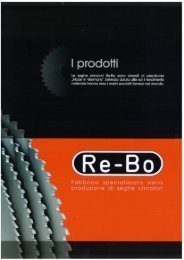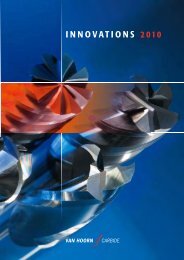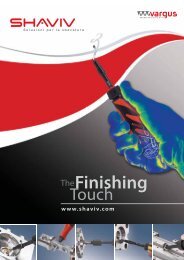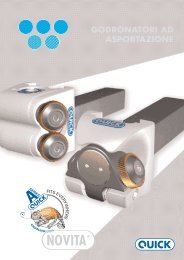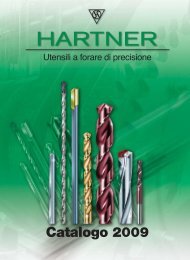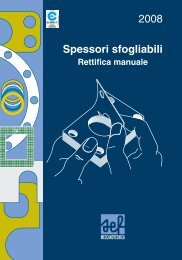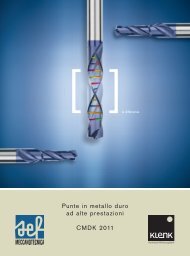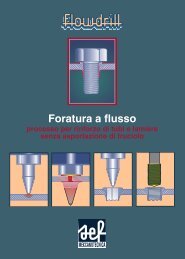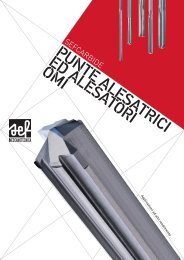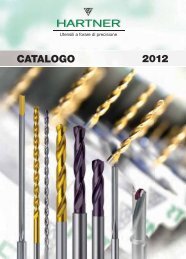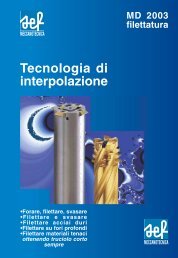Metric Catalogue - SEF meccanotecnica
Metric Catalogue - SEF meccanotecnica
Metric Catalogue - SEF meccanotecnica
- No tags were found...
You also want an ePaper? Increase the reach of your titles
YUMPU automatically turns print PDFs into web optimized ePapers that Google loves.
Optimised Cutting-High Performance Cutting (HPC)Since producing it’s first cutting tools in 1919, M.A.Ford has always strived to improve it’s customersproductivity and hence lower costs.The Tuffcut XR-XT range of end mills is the latest step in this process, offering unique Heli-pitch geometry, proprietarysubstrates and state of the art AlTima coatings.High Speed Machining or HSM has long been characterised by cutting conditions that are 4 to 10 times higher thanconventional machining. The machine tools widely available today to 95% of customers are not capable of these cuttingspeeds nor do they have the rigidity required.High Performance Cutting techniques (HPC) use cutting speeds that are 2 times+ that of standard or conventionaltechniques. In conjunction with the increase in surface speed, by controlling the engagement angle of the cutting toolduring the milling process and the use of chip thickness compensation-vastly increased cutting data can be achieved.Before using these techniques there are several required pre-requisites:-Rigid machine tools with modern control systems with a HSM function..High performance, high technology cutting tools.High gripping strength, rigid tool holders.Air or powerful coolant delivery system-according to material being machined.Cad Cam software to control the engagement angle of the tool.M.A.Ford has partnered with OneCNC Cad/Cam software company to provide this service to it’s customers.In conjunction with their XR3/XR4 sofware with it’s HSM function the radial engagement of the tool during the millingprocess can be guaranteed never to exceed the set percentage.A step over of 10% of the cutter diameter requires a chip thickness compensation factor of 1.8 to be applied.20% radial engagement requires a compensation of 1.2 times. However, care must be taken when using these ratesfor tight corner internal machining.Due to the small radial cuts, large axial cuts – typically 2 times the tool diameter can be used.The combination of these factors enables most steels up to 40HRC to be machined at feeds of up to 13 metres/min.An example of this HPC cutting data can be seen on the facing page in a direct comparison with conventionalprogramming techniques.Benefits of HPC using OneCNC software-• Decreased cycle time• Reduced costs• Potentially reduced cutting tool diameter and hence cost• Improved process reliability• Improved cutting tool life• Reduced coolant consumption94www.maford.com email: sales@mafordeurope.com Tel:+44(0) 1332 267960 Fax:+44(0) 1332 267969




